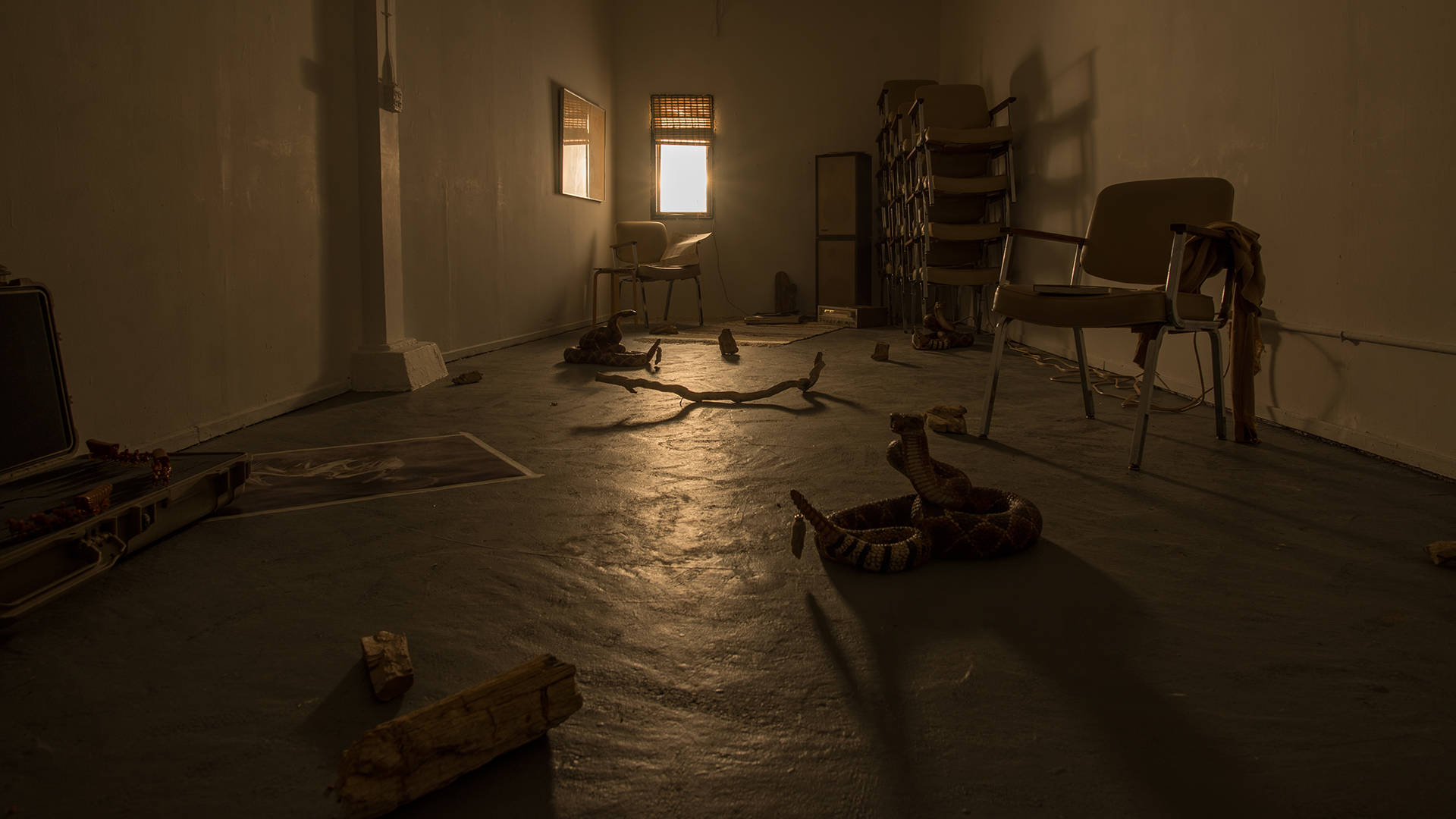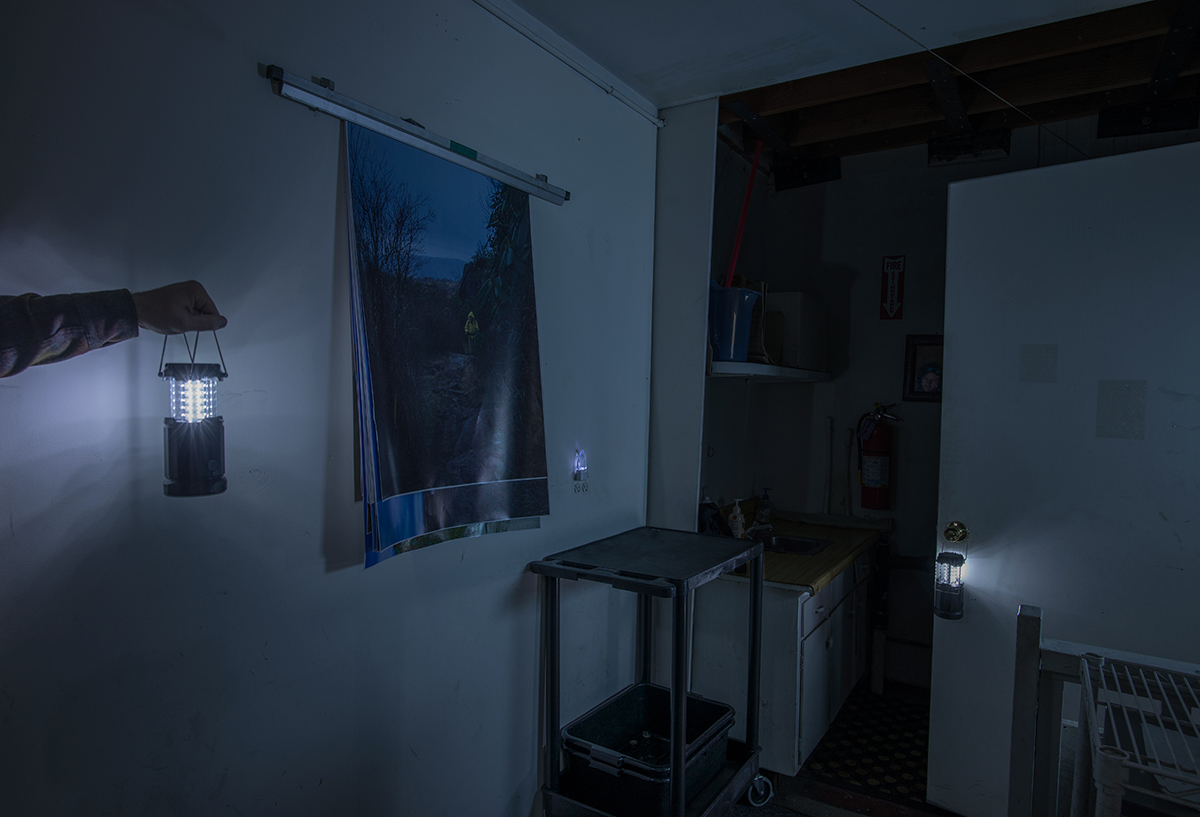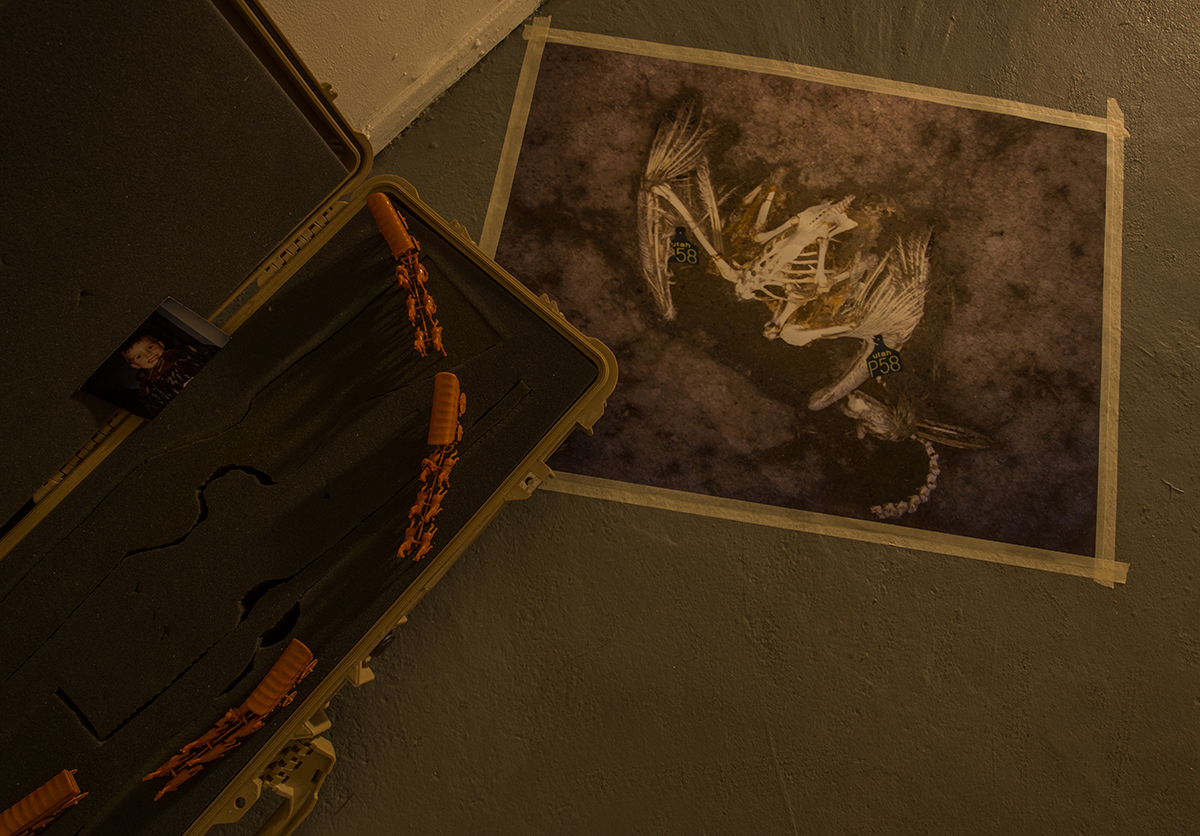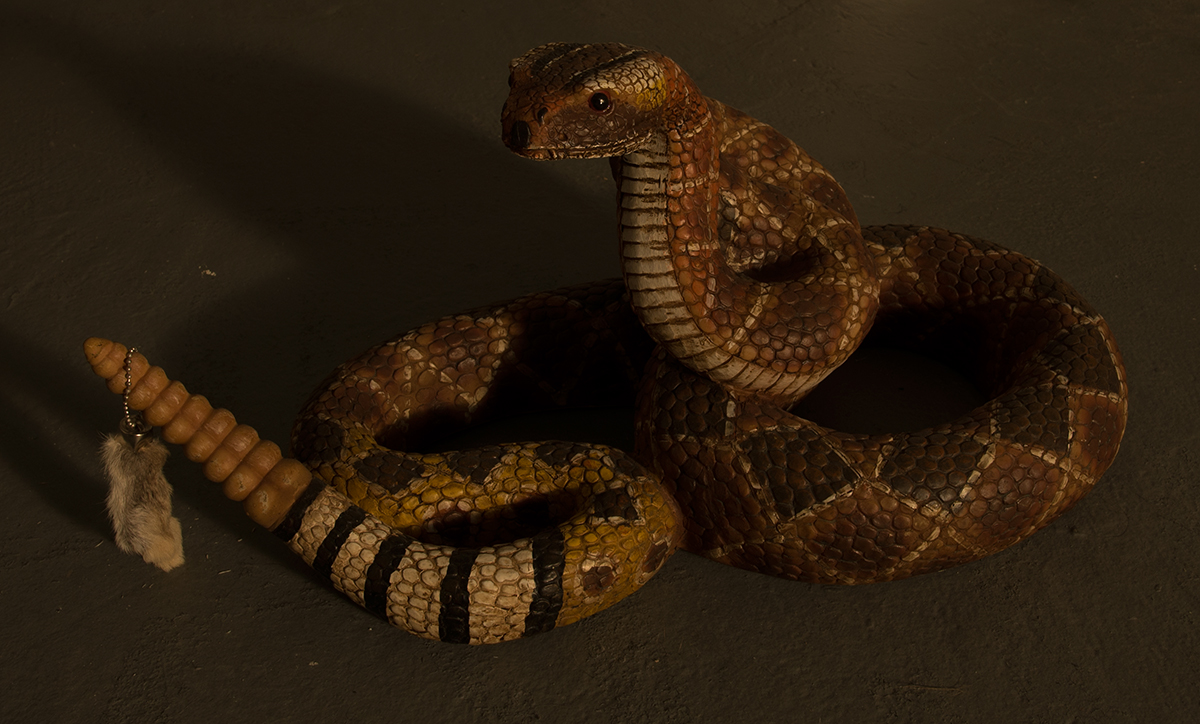Descending into Et al. gallery’s Chinatown location is always a thrilling process of discovery. Without a street-facing window (or usually any windows at all), knowledge of the particular layout of an Et al. exhibition or its contents remains unknown for the entire journey down a narrow hallway and a flight of wooden stairs. Anticipation builds in inverse proportion to the distance remaining before the big reveal.
Happily, in Wyoming-based artist Andy Kincaid’s current solo exhibition A Minute Description of the Route, the process of discovery doesn’t stop at the last wooden step. Scattered across the gallery floor and walls are objects tangentially related to journeys — historic, mythologized and contemporary — across the American continent. With the image list in hand, stepping through a maze of cast resin rattlesnakes, pieces of petrified wood, stacked chairs, inkjet prints and other detritus feels a bit like a three-dimensional I Spy exercise. Kincaid rewards diligent looking with the oddest of treats, including a disembodied mannequin head and the artist’s own varicose leg vein.
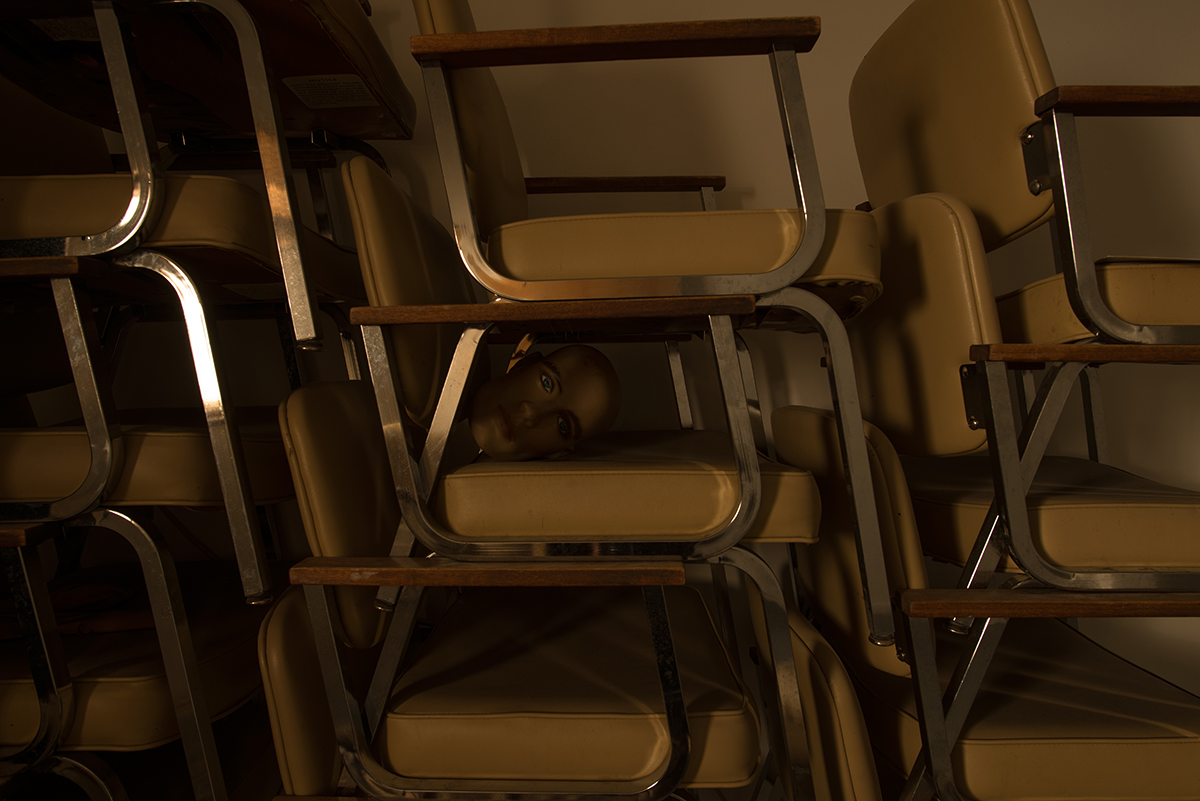
The installation, lit from one small window cut into the gallery’s back wall and illuminated from behind by warm yellow spotlights, sits in a perpetual golden hour. There is a beige sameness to the objects, a combination of their natural hues and the spectrum of light making them visible. A record player on the floor adds to the ambiance by looping Sounds of Nature Series – Prairie Spring; crickets chirp.
The most contained representation of the exhibition’s themes comes from a piece titled Trail Guide / 1950 California Trail miles / 2179 Appalachian Trail miles / 2170 Oregon Trail miles / understanding pathways / for Grandma Gatewood. (Be forewarned, this is not the longest title in the exhibition.) A waist-high metal rack, originally made to support blueprints, clips together enlarged reproductions of pages from the 1858 book The National Wagon Road Guide with torn-out pages from a 2010 copy of The Thru-hiker’s Handbook, a guide to the Appalachian Trail.
